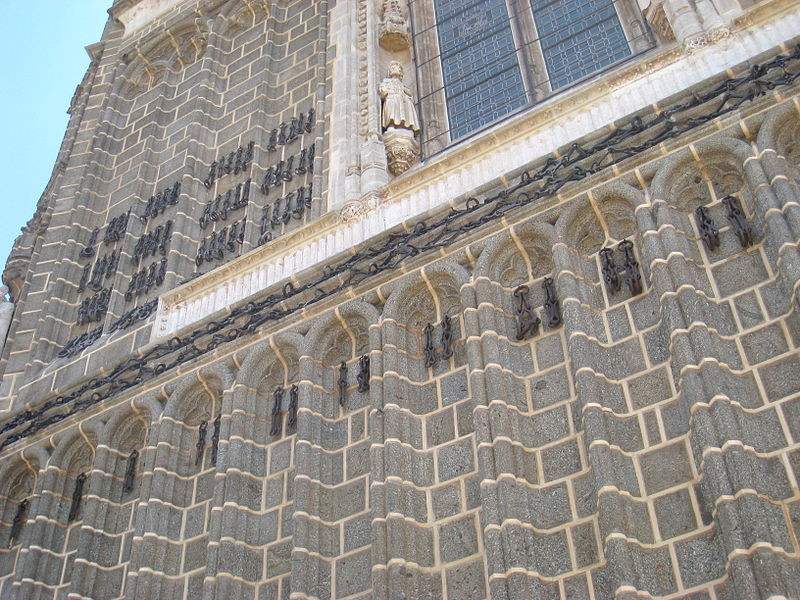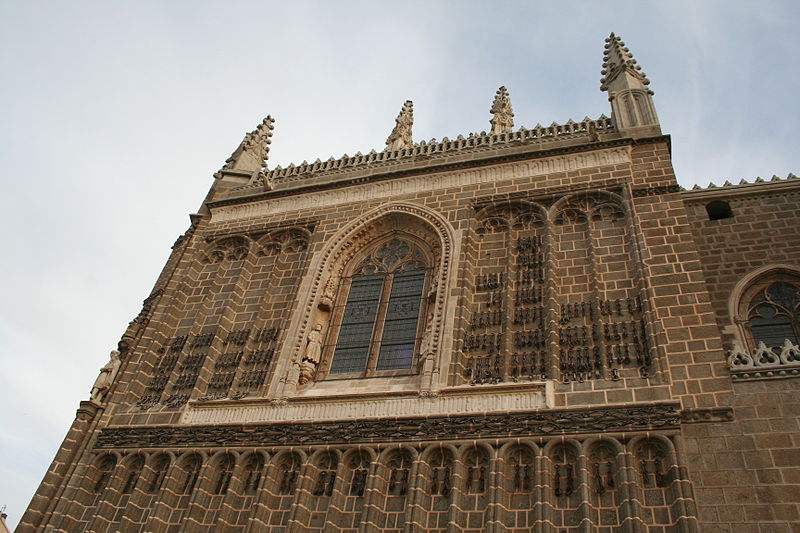
Closeup photo of San Juan de los Reyes, Toledo, Spain by MRMaeyaert. Hanging from the exterior walls are the manacles and shackles once worn by the Catholics imprisoned by the Muslims.
Queen Isabella of Castile and León—the sponsor of Christopher Columbus’s discovery of the Americas—is known in History as “Isabella the Catholic,” but she could also be seen as “Isabella the Liberator.”
During the ten-year war to reconquer the Kingdom of Granada and reintegrate it into Catholic Spain, she liberated thousands of Catholic captives reduced to the harshest slavery by their Muslim masters. As the virtuous Queen’s troops stormed the walls of city after Muslim city, the dungeons inside disgorged a veritable cross-section of enslaved Castilian society: nobles; ladies; clergy; knights; religious; merchants; peasants; men; women; and children.
All who were captured by the Muslims in their cruel razias were driven like cattle back to the kingdom of Granada and sold as slaves in the open market. Anyone not able to ransom himself or herself was doomed to a life that seemed worse than death. Sadly, and to put an end to their tortures and sufferings, many despaired and apostatized from the Catholic faith, submitting to Islam. The temptation to do this was so strong and the lot of the captives so pitiful, that God had inspired St. Peter Nolasco to found the Mercedarians in 1218—a religious order dedicated to the redemption of captives who were at risk of losing the Faith. While this worthy order had grown immensely and done much good in the following centuries, thousands upon thousands of Catholics still languished in Muslim slavery when the war for the reconquest of Granada started in December 1481.
For the next ten years, until the fall of the capital city of Granada in January 1492, Christian captives were liberated from slavery with every Spanish victory. Thousands of these Catholic ex-slaves followed the example of the cured Samaritan leper, and made their way to wherever Queen Isabella was to thank the sovereign on their knees for their regained freedom. She commanded her troops to knock off their chains, which she then ordered hung outside the walls of the Monastery of St. John of the Kings, which she built in Toledo in thanksgiving to God for her victory in the wars she was forced to fight to secure her rights to the Crown at the beginning of her illustrious reign. Today, more than 500 years later, many of these ancient chains can still be seen where they were first hung in silent gratitude and tribute to the Crusading heroism and charity of a truly Catholic Queen.
Short Stories on Honor, Chivalry, and the World of Nobility—no. 459











